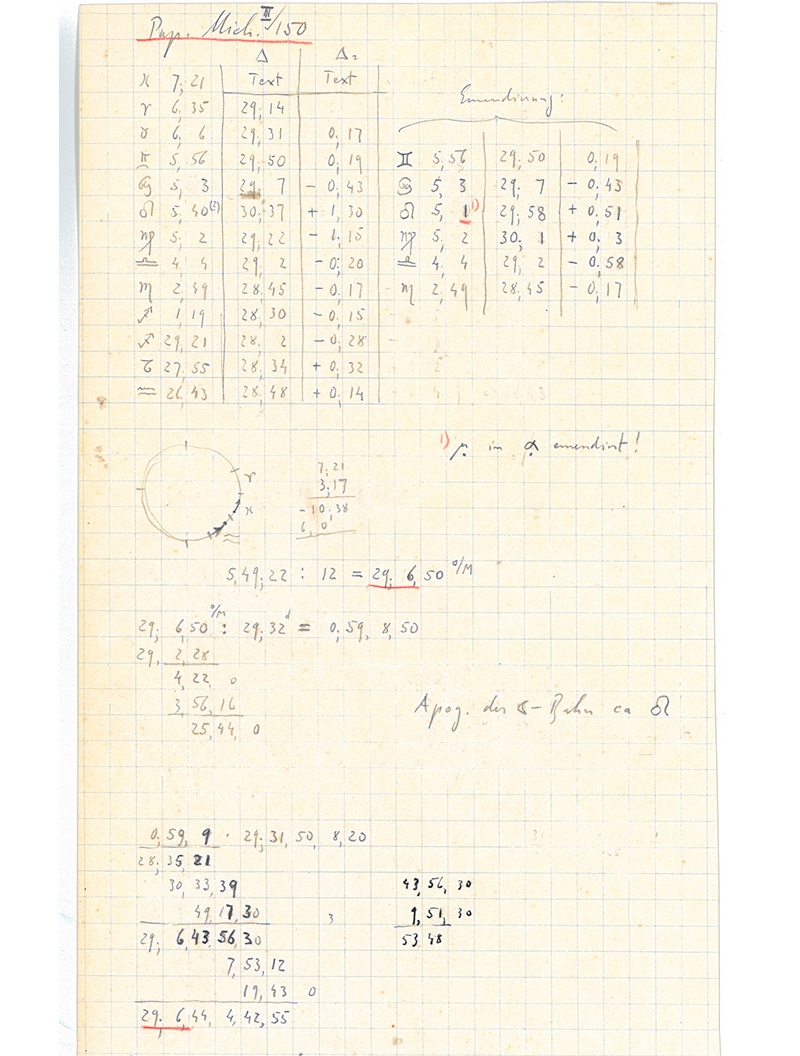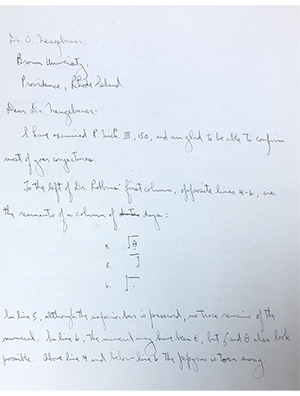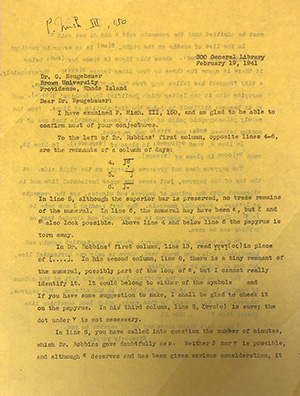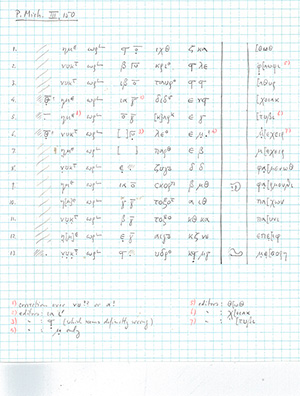Working with Papyri

- 1941 letter from Herbert Youtie to Otto Neugebauer (handwritten draft).
- The Herbert C. and Louise C. Youtie papers, Box 4, Neugebauer, O. (1941-1949), Bentley Historical, Library, University of Michigan.

- 1941 letter from Herbert Youtie to Otto Neugebauer.
- The Herbert C. and Louise C. Youtie papers, Box 4, Neugebauer, O. (1941-1949), Bentley Historical Library, University of Michigan.

- Neugebauer’s notes on Mich. III 150 = P. Mich. inv. 3823.
- Otto E. Neugebauer Papers (1949-1984), folder P. Mich. 150, University of Michigan Library, Papyrology Collection.

- Neugebauer’s notes on Mich. III 150 = P. Mich. inv. 3823.
- Otto E. Neugebauer Papers (1949-1984), folder P. Mich. 150, University of Michigan Library, Papyrology Collection.
Now many papyrological collections are digital archives on the internet, so that scholars from around the world can study the material without ever visiting the collections. In the past, this was not the case and so scholars would have to visit a collection to inspect papyri in person or use good black-and-white photographs (not color digital images, which allow us to zoom in or even manipulate with photoshop). If they needed to check something against the original, they would write the curators (trusting their eyes!). This is the case with Otto Neugebauer who wrote to Herbert Youtie (research assistant and then professor of papyrology since 1929 and the curator of UM papyrological collection from 1948 to 1975) asking to check against the original some conjectures he had made on the basis of a photo of the papyrus. Here we read Youtie’s response confirming Neugebauer’s conjectures (we can see both a page of his handwritten draft and the typewritten version sent to Neugebauer).
The other two documents shown here are Neugebauer’s notes, written while he was studying this papyrus. In particular, the first one is a transcription of the papyrus, while the other one shows a table and calculations made in order to understand how this table works and whether it could help for dating the phenomena listed in the original table, and hence for dating the document. The table has, in the first column, the text of the papyrus with the degrees of ecliptic longitude (counted from 0 up to but not including 30 within each zodiac sign) for all the Full Moons; the second column reports Neugebauer’s calculations of the arcs of the ecliptic traveled by the Moon between two successive Full Moons; the last column shows the change of the length of each of these arcs from the previous one. The small table to the right is an attempt to correct one of the numbers in the papyrus to obtain a smoother numerical sequence; actually, the fault lies in a different number and was corrected in 1947 by Delporte. In the rest of the page are calculations of the average arc traveled by the Moon between Full Moons, for the sake of comparison with the papyrus. The results of Neugebauer’s study of this papyrus as attested in these notes were published in 1942 in an article in the Transactions of the American Philosophical Society (where Neugebauer also thanks Youtie for checking the original on his behalf).



